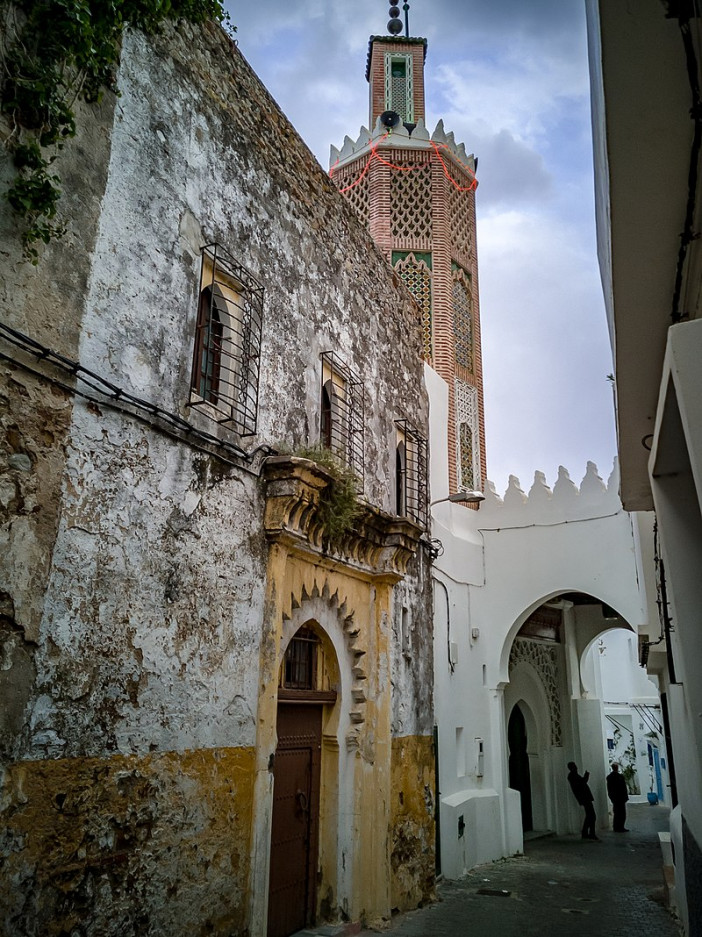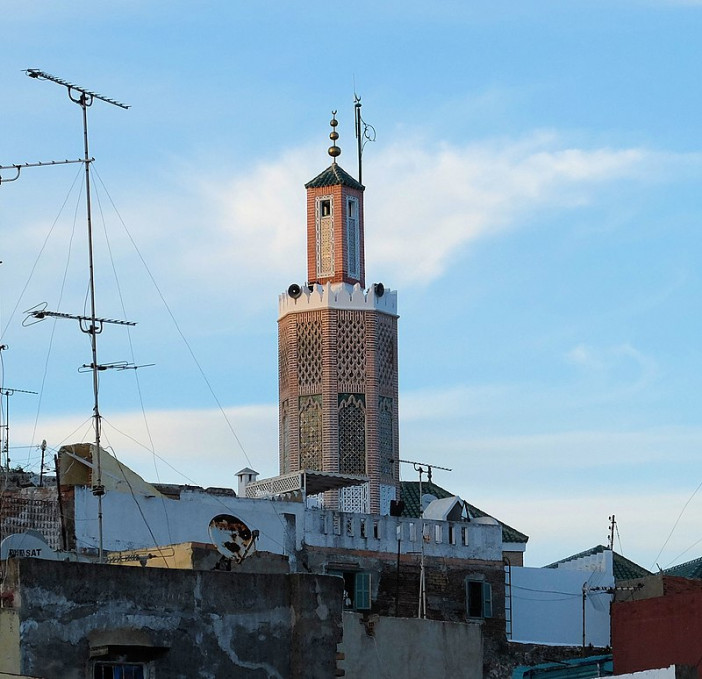Kasbah Mosque (Tangier)
History
The Tangier kasbah (citadel) was constructed immediately following Morocco's seizure of the city from the English in 1684. Moulay Ismail, the Moroccan ruler, authorized the city's rebuilding under the direction of its new governor, Ali ibn Abdallah Errifi. The fortifications of the city had to be nearly fully rebuilt because the English had destroyed them before leaving. The establishment of the Moroccan government's center of authority within the city's autonomous walled area, the kasbah, was one aspect of this rebuilding (much as in other traditional Moroccan cities). A palace (the Dar al-Makhzen), a governor's mansion, a treasury, a courthouse, jails, stables, military housing, and a parade were all located within this district's walls and gates.
Thus, during Moulay Ismail's rule in the late 17th century, Ali Errifi constructed the mosque of the Tangier kasbah. Further south in the city, the Grand Mosque was rebuilt by Errifi. Ahmed, Errifi's grandson, enlarged the mosque by constructing its beautiful entryway and minaret. Sultan Muhammad ibn Abd al-Rahman (Mohammed IV), who ruled from 1859 to 1873, increased the size of the mosque's prayer hall. In preparation for Sultan Moulay Hassan I's arrival, it was repaired in 1889. The mosque was renovated in 1921 by the regional authority in charge of religious foundations (habous), but most of its original decoration was covered up using new colors. In the most recent years, during repairs that were completed about 2015, some of this cover-up was exposed.
Urban and Architectural
The kasbah's palace complex, which is now a museum, sits just south of the mosque. White walls and rows of Moorish arches make up the majority of the mosque's interior, which is somewhat basic (like many Moroccan mosques). It contains a modest, rectangular courtyard that is roofed over and includes a nearly simple mihrab (a niche or arched alcove that represents the direction of prayer).
The exterior has the most distinctive features. The entrance lies on Ibn Abbou Street, which is an alley next to the museum/palace entrance, and is protected by a modest archway that currently covers the street.
The doorway, which is also designed in the style of a Moorish arch, is embellished with typical radiating geometric designs, the spaces between which are covered in vibrant zellij tilework. The minaret, which rises above the entryway, is unique for its decoration and for having an octagonal shaft rather than a square shaft like the majority of Moroccan minarets. Ornate blind arches, again adorned with multicolored zellij tilework, and panels with sebka geometric motifs adorn its facades.
Description
Details
Location
Tangier, Morocco
Owners
Ali ibn Abdallah Errifi
Year of Build
After 1684
Drawings
Map
History
The Tangier kasbah (citadel) was constructed immediately following Morocco's seizure of the city from the English in 1684. Moulay Ismail, the Moroccan ruler, authorized the city's rebuilding under the direction of its new governor, Ali ibn Abdallah Errifi. The fortifications of the city had to be nearly fully rebuilt because the English had destroyed them before leaving. The establishment of the Moroccan government's center of authority within the city's autonomous walled area, the kasbah, was one aspect of this rebuilding (much as in other traditional Moroccan cities). A palace (the Dar al-Makhzen), a governor's mansion, a treasury, a courthouse, jails, stables, military housing, and a parade were all located within this district's walls and gates.
Thus, during Moulay Ismail's rule in the late 17th century, Ali Errifi constructed the mosque of the Tangier kasbah. Further south in the city, the Grand Mosque was rebuilt by Errifi. Ahmed, Errifi's grandson, enlarged the mosque by constructing its beautiful entryway and minaret. Sultan Muhammad ibn Abd al-Rahman (Mohammed IV), who ruled from 1859 to 1873, increased the size of the mosque's prayer hall. In preparation for Sultan Moulay Hassan I's arrival, it was repaired in 1889. The mosque was renovated in 1921 by the regional authority in charge of religious foundations (habous), but most of its original decoration was covered up using new colors. In the most recent years, during repairs that were completed about 2015, some of this cover-up was exposed.
Urban and Architectural
The kasbah's palace complex, which is now a museum, sits just south of the mosque. White walls and rows of Moorish arches make up the majority of the mosque's interior, which is somewhat basic (like many Moroccan mosques). It contains a modest, rectangular courtyard that is roofed over and includes a nearly simple mihrab (a niche or arched alcove that represents the direction of prayer).
The exterior has the most distinctive features. The entrance lies on Ibn Abbou Street, which is an alley next to the museum/palace entrance, and is protected by a modest archway that currently covers the street.
The doorway, which is also designed in the style of a Moorish arch, is embellished with typical radiating geometric designs, the spaces between which are covered in vibrant zellij tilework. The minaret, which rises above the entryway, is unique for its decoration and for having an octagonal shaft rather than a square shaft like the majority of Moroccan minarets. Ornate blind arches, again adorned with multicolored zellij tilework, and panels with sebka geometric motifs adorn its facades.
Description





